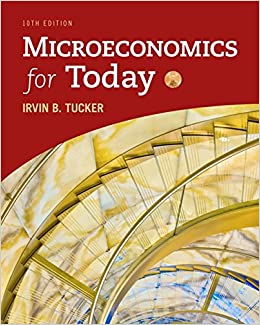Question
Part III: Welfare analysis of alternative policies A group of activists known as Saving Sunnydale wants to discourage the development of new single-family detached houses
Part III: Welfare analysis of alternative policies
A group of activists known as "Saving Sunnydale" wants to discourage the development of new single-family detached houses that will be built in the city of Sunnydale because they do not want the city's population to increase. The supply and demand for new single-family homes in Sunnydale are given by the following equations (this is a very strange real estate market in which all houses are identical in the eyes of consumers):
QS = 0.06P - 7,500 and QD = 11,000 - 0.04P (or, equivalently, PS = 125,000 + (100/6)Q and PD = 275,000 - 25Q)
where prices are measured in dollars.
- Without any government intervention, what would be the number of new houses in Sunnydale? What would be the equilibrium price?
- Graph the supply and demand curves. Graphs don't have to be drawn to scale, but you should clearly label the x- and y-axes, supply and demand curves, the y-intercepts of both lines, and the equilibrium price and quantity.
- How large are consumer surplus and producer surplus? What is the total surplus? In addition to your numerical calculations, label CS and PS on your graph from the previous question.
One policy option that Saving Sunnydale is advocating is imposing a $30,000 unit tax on new single family homes.
- What would be the new quantity of single family homes? What price would consumers pay, and what price would producers receive (net of the tax)?
- Who would benefit and who would be harmed by the tax, and by how much (relative to the initial equilibrium prior to any government intervention)? You should calculate the magnitudes of the gains and losses and also show the new situation graphically. [The parties you should consider are consumers, producers, and the government.]
- How much deadweight loss would be created by this tax? In addition to calculating its magnitude, show DWL on your graph from the previous question.
An alternative policy is to rezone the land in Sunnydale to restrict the quantity of new houses to the same number that would be built with the $30,000 tax. [In other words, the government limits the quantity to that found in question 7, but has no further involvement - no taxes are collected, and producers are simply allowed to sell that number of homes at whatever price consumers are willing to pay. If this sounds like something we haven't gone over, note that this policy is equivalent to creating a price floor at the price consumers would pay under the tax, which you also found in question 7.]
- Which group (consumers or producers) would most likely advocate the use of this zoning policy instead of the tax? Clearly support your answer by demonstrating how the use of this zoning approach (rather than the tax) would alter the gains and losses to each affected group (include numbers and calculations)..
Step by Step Solution
There are 3 Steps involved in it
Step: 1

Get Instant Access to Expert-Tailored Solutions
See step-by-step solutions with expert insights and AI powered tools for academic success
Step: 2

Step: 3

Ace Your Homework with AI
Get the answers you need in no time with our AI-driven, step-by-step assistance
Get Started


